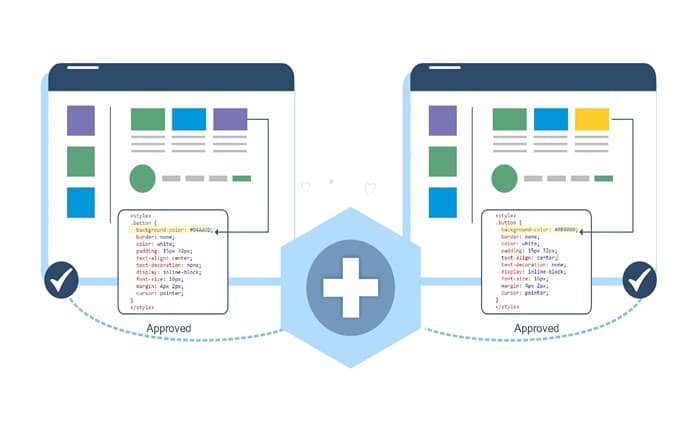In today’s digital environment, application development teams are actively looking for ways to optimize their work, increase productivity, and release more effective products in a shorter time. Another new trend is self-healing in agile development automation. The combination of agile methodologies and intelligent automation practices is revolutionizing team collaboration. It empowers teams to focus on the creation of value and minimize time spent on repetitive tasks and troubleshooting. In this blog post, we’ll discuss self-healing automation, its importance in agile development, and practical implementation strategies.
What is Self-Healing Automation?
Self-healing automation in application development refers to systems and processes that can automatically detect, diagnose, and resolve issues without human intervention. It is like having a virtual team member continuously monitoring for problems and knowing how to fix them.
Self-healing automation can be used in agile development for different application lifecycle stages, including continuous integration, deployment, testing, and monitoring. The objective is to establish a strong and resilient system that can independently maintain itself, freeing human developers to concentrate on creative and strategic responsibilities.
Why Self-Healing Automation Matters in Agile Development
Agile development focuses on quickly adapting to change and delivering customer value through short, iterative cycles. Self-healing automation complements these principles:
- Self-healing systems promptly resolves issues, minimizes disruptions, and ensures continuous availability of services, reducing downtime and enhancing reliability.
- Automating routine tasks and troubleshooting enables teams to speed up development cycles, allowing them to deliver features more quickly.
- Automated testing and monitoring with self-healing capabilities can improve application quality by catching and fixing issues before they reach production.
- Developers can focus on innovation and solving complex problems by reducing the time spent on manual interventions.
- As projects become more complex to scale up, self-healing automation assists teams in handling larger workloads without needing to hire more staff.
Implementing Self-Healing Automation: A Step-by-Step Approach
Now that we’ve established the value of self-healing automation in agile development, let’s look at how teams may effectively use it. This procedure consists of many critical steps:
Identify Automation Opportunities
The first step is to identify parts of your development workflow that might benefit from self-healing automation. Look for repeated chores, recurring challenges, and procedures that are prone to human mistakes. Examples include:
- Build and deployment processes
- Testing routines
- Infrastructure provisioning and scaling
- Log analysis and error detection
- Performance monitoring and optimization
By mapping out these areas, you may decide which portions of your process to automate first, focusing on those that will have the most effect.
Choose the Right Tools and Technologies
Choosing the right tools is essential for successful self-healing automation. Options range from open-source solutions to enterprise-grade platforms, with popular choices including:
- Jenkins for continuous integration and delivery
- Ansible or Puppet for configuration management
- Kubernetes for container orchestration
- Elasticsearch and Kibana for log analysis and monitoring
- Selenium or Cypress for automated testing
Consider factors like integration with your existing stack, scalability, and community support when choosing tools. Ensure the selected tools have robust APIs and scripting support for implementing self-healing behaviors.
Design Self-Healing Workflows
Create self-healing workflows by developing scripts and rules to dictate system responses in various scenarios.
- If a build fails due to an error, automatically retry with updated dependencies.
- Automatically increase resource availability when the performance threshold is exceeded.
- Analyze error logs and apply fixes before re-running a failed test.
Creating automated responses that mimic human problem-solving is crucial. This collaboration between developers, operations teams, and quality assurance is essential to capture collective knowledge on addressing common issues.
Implement Monitoring and Alerting
Effective self-healing automation depends on robust monitoring and alert systems. Such systems serve as the “eyes and ears” of your automated processes, consistently detecting potential problems. Ensure monitoring covers:
- Application performance metrics
- Infrastructure health
- Error rates and types
- User experience indicators
- Security events
Create alerts that prompt notifications to operators and initiate automated remediation processes. This establishes a feedback loop to detect and resolve issues before they affect end-users quickly.
Develop and Train Machine Learning Models
Consider incorporating machine learning models to enhance self-healing automation. These models analyze system behavior patterns and predict potential issues proactively. Additionally, they improve troubleshooting capabilities by learning from past incidents.
A machine learning model could, for instance:
- Predict server overloading and proactively adjust resources.
- Identify unusual user behavior that may indicate a security threat.
- Analyze performance data to propose codebase optimizations.
Developing these models may require expertise in data science and machine learning, potentially leading you to bring in specialized talent or partner with AI-focused companies.
Integrate with Agile Practices
The self-healing automation framework needs integration into existing agile practices for optimal performance in an agile environment.
- Including automation tasks in sprint planning.
- Monitoring the progress of automated workflows in your backlog.
- Talking about automation enhancements during retrospectives.
- Including self-healing metrics in your definition of done.
Making automation an integral part of your agile process guarantees its constant evolution and continuous value provision as your project expands.
Test and Iterate
Implementing self-healing automation is a step-by-step process. Begin by selecting a few crucial workflows, thoroughly test them, and gather feedback. Use this feedback to improve and gradually increase the scope of your automation.
Regular testing is essential to ensure self-healing processes function accurately without any unintended consequences. Develop different failure scenarios and validate the accuracy of automation response.
Foster a Culture of Automation
Successfully implementing self-healing automation requires both technical skills and a shift in mindset. Foster a culture that values automation and continuous improvement within your team. Encourage team members to:
- Share knowledge about common problems and their solutions.
- Identify automation opportunities proactively.
- Work together to create and improve automated workflows.
- Celebrate successes and learn from failures in automation.
By promoting automation as a helpful tool rather than a job security risk, you can encourage your team to adopt and lead the implementation of self-healing processes.
Measure and Communicate Results
To prove the worth of the Self-healing automation framework and ensure ongoing support for your projects, it is crucial to measure and communicate the results. Monitor metrics like:
- Reduction in the mean time to recovery (MTTR)
- Increase in system uptime
- Time saved on manual interventions
- Improvement in deployment frequency
- Enhanced code quality and reduced bug rates
Regularly share metrics with stakeholders and use them to guide future automation efforts. Show how self-healing automation improves team productivity and product quality to build momentum and enthusiasm for continued investment.
Conclusion: Embracing the Future of Agile Development
Implementing a Self-healing automation framework in agile development requires more than just new tools; it demands a new work approach that empowers teams to reduce repetitive tasks and manual interventions, allowing developers to focus on innovation. This involves careful planning, the right tools, and continuous improvement to create adaptable systems. The benefits include faster development cycles, enhanced reliability, improved quality, and efficient scalability. As agile teams strive to deliver greater value quickly, self-healing automation becomes essential, transforming workflows and boosting productivity and innovation. Embrace self-healing technology to revolutionize your agile development process.





